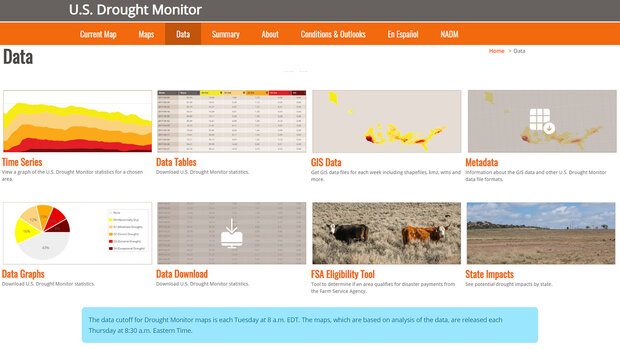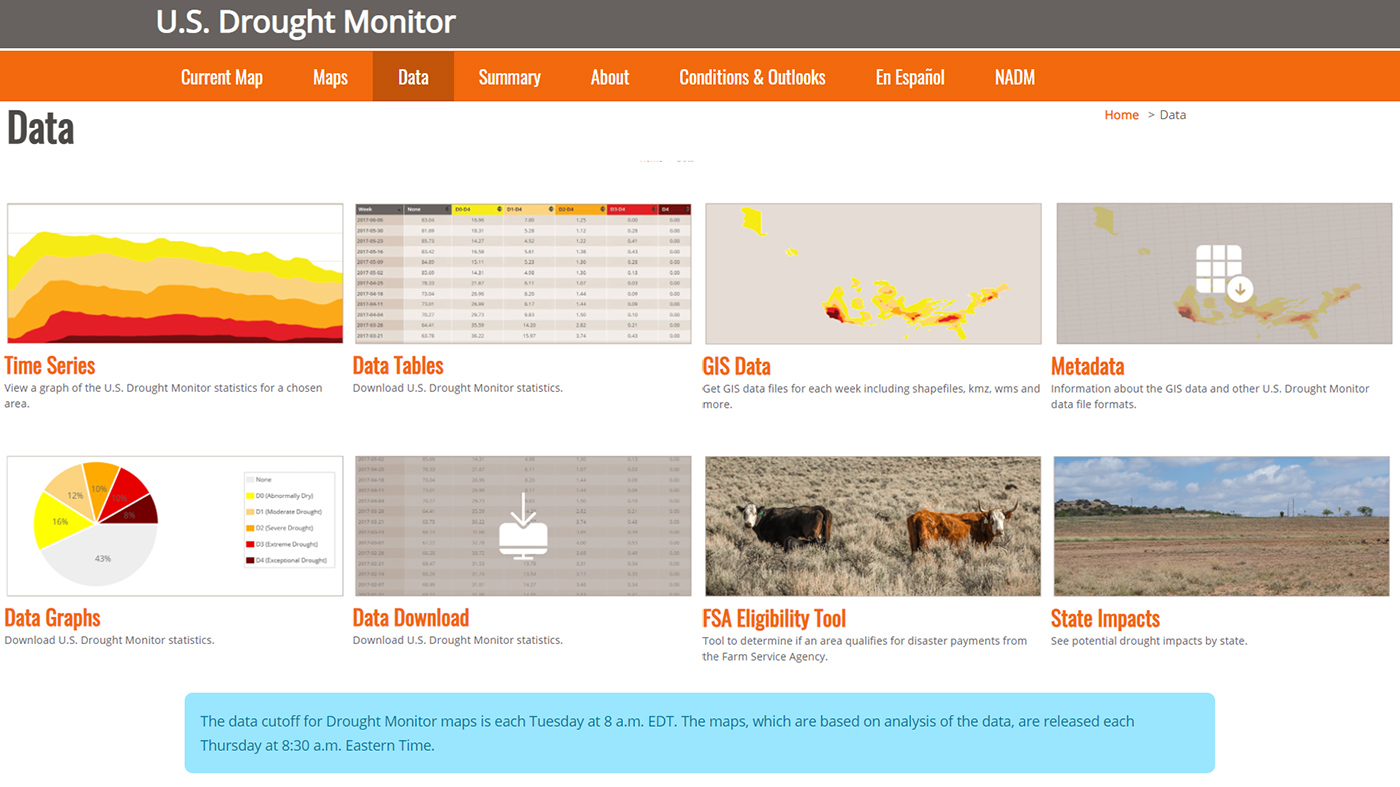The Drought Risk Atlas provides historic data about drought for weather stations across the United States that have at least 40 years of records. Users can select a station and view data for several drought indices over time, frequency statistics for drought thresholds, drought period information, and index comparisons.
Where do these data come from?
The Drought Risk Atlas uses precipitation records from the National Weather Service Cooperative data (COOP) that is archived by the Regional Climate Centers (RCC) in their Applied Climate Information System (ACIS).
-
What can I do with these data?
You can explore drought history at thousands of stations across the contiguous U.S. Values for several drought indices are pre-computed, and data are available for download. Within the Map Viewer, you can view U.S. Drought Monitor or Standardized Precipitation Index maps
How do I use the U.S. Drought Atlas site?
- See Help for the Map Viewer and the Data Tool on the Atlas site.
-
Data Format(s)TXT (ASCII), CSV
Access Type Link & Description Mapping Access maps of drought and other climate layers -
Data TypeLand-based station, Model, Satellite, Severe weatherEssential Climate VariablesAir temperature, , , , , , , , , , , , ,Science OrganizationNational Drought Mitigation CenterEmaildroughtmonitor@unl.edu
 Click to see more detail
Click to see more detail
